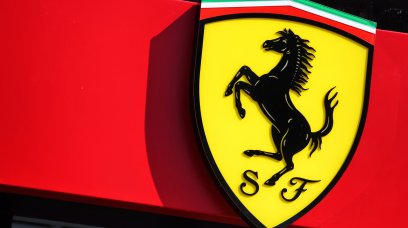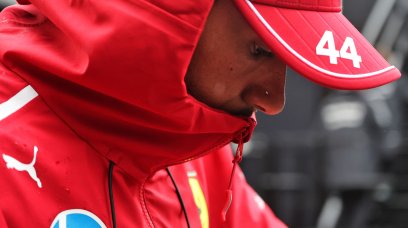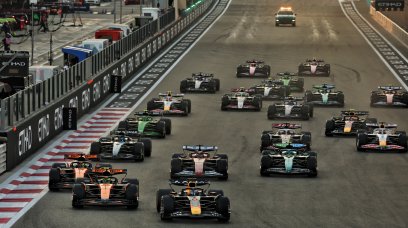After a pandemic-induced delay of 12 months, Formula 1 ushers in a new era of technical regulations for 2022. With little to no carryover from last year's cars, designers will be hoping to outmanoeuvre their competitors with clever interpretations of the new rules. To mark the occasion, RacingNews365.com has trawled through the archives to bring you five of the best technical innovations in F1 history.
Double diffuser
F1's last major overhaul of technical regulations came in 2009, when the aerodynamic appendages that had become de rigueur were outlawed, and the permitted size and dimension of the front and rear wings were vastly altered, giving the cars a striking new appearance. A clean slate and a new set of rules afforded designers and engineers the chance to try to steal a march on their competitors with previously unthought-of innovations, and so it was that Toyota, Williams and Brawn turned up at pre-season testing with the so-called 'double diffuser'. Using a hole in the cars' floors to channel air rearwards towards a second diffuser, this innovation clawed back almost all the downforce that the new regulations had been designed to reduce. Despite the team having been hastily assembled after Honda's sudden withdrawal, Brawn’s iteration of the double diffuser was devastatingly effective, and saw driver Jenson Button win six of the season's first seven races. Though Brawn slipped back into midfield once other teams caught on and caught up, the Brackley squad had done enough in the first half of the season to clinch both of that year's titles, with Button taking his first and only drivers' championship.
F-Duct
With Brawn-style double diffusers banned for 2010, teams were forced to get creative again, and this time McLaren caught the grid's attention with a small snorkel on the left side of the cockpit, known as the F-Duct. Onboard cameras showed drivers Button and Lewis Hamilton using their left leg - which had nothing else to do on long straights - to block this hole, channelling air down the chassis and onto the rear wing. This then stalled the wing, reducing drag and increasing the top speed of the MP4-25 by roughly three miles per hour. Crucially, the F-Duct was not considered a 'movable aerodynamic device' - strictly forbidden under that year's rules - and the FIA ruled that McLaren's innovation was perfectly legal. Unsurprisingly, others soon scrambled to create their own version of this proto-DRS, but with several teams opting for systems operated by the driver removing his left hand from the steering wheel, the FIA swiftly outlawed the F-Duct for 2011 on safety grounds, instead mandating the introduction of DRS that continues to exist - and polarise opinion - within F1 to this day.
Dual Axis Steering
Despite having won the previous five Drivers' and Constructors' championships, Mercedes had no intention of resting on their laurels and caused a stir at pre-season testing in 2020 when drivers Hamilton and Valtteri Bottas were seen pushing and pulling on the steering wheel to change the toe angle of the front wheels. Known as 'Dual Axis Steering', or DAS, the system allowed Hamilton and Bottas to straighten up their front wheels on straights, serving the dual purpose of increasing speed by reducing drag and allowing for a more even spread of tyre wear. The mechanism drew admiring glances from throughout the F1 paddock, and Mercedes once again went on to win both titles with relative ease that year, with DAS proving especially effective at heating the tyres ahead of Safety Car restarts. However, though the FIA allowed the use of DAS for 2020, it subsequently announced that the system would be banned from 2021 onwards, fearing it would prove too expensive for teams to develop and maintain in an era of F1 with cost-cutting very much on the agenda.
Ground effect
Lotus founder Colin Chapman was well-known within motorsport circles for pioneering several technical innovations that kept the Hethel squad at the sharp end of the grid in the 1960s and early 70s, such as rear suspension struts, the monocoque chassis, and front and rear wings. After a fallow few years, Chapman set about taking the aerodynamic principles in front and rear wings one step further. The result was 1977's Lotus 78, in which the whole car was treated like a wing, with moulded venturi tunnels underneath the chassis creating low pressure and sucking the car to the ground – a principle known to the uninitiated as ground effect. After winning four races in 1977 with the 78, Chapman and his team perfected the principles of ground effect with the following year's Lotus 79, which Mario Andretti drove to that year's title. So dominant was the 79 that ground effect soon became commonplace throughout the grid, before a combination of dangerously fast cornering speeds and a series of serious accidents prompted the FIA to outlaw the principle for 1983, insisting instead that all F1 cars be flat-bottomed.
Semi-automatic transmission
For the first four decades of F1, the cars' gearbox and transmission were similar to those used on ordinary road-going vehicles, with a clutch pedal and a manual shift with five (and later six) gears. However, Ferrari rewrote the rulebook in 1989 with the introduction of a seven-speed semi-automatic transmission, which did away with the clutch pedal and saw the drivers change gear with a couple of paddles attached to the back of the steering wheel. This meant that drivers could keep their hands on the wheel all race long, rather than having to manually shift up and down, and the transmission's sequential nature also removed the risk of drivers missing gears, as happened occasionally with the conventional system. Pre-season testing revealed a multitude of teething problems with the ground-breaking Ferrari 640 (main photo), and Nigel Mansell famously arranged a return flight home from the season opener in Rio before the race was scheduled to finish, so confident was he that his Ferrari's new box would not hold together. Against all the odds, Mansell not only finished but won the 640's first Grand Prix, but a multitude of retirements in subsequent races showed there was still much to be done to make the system reliable. Nonetheless, Ferrari persisted with the programme, other teams soon followed suit, and by the middle of the following decade, every car on the grid had the same type of semi-automatic paddle-shift gearbox that Ferrari had pioneered in 1989.
Most read






